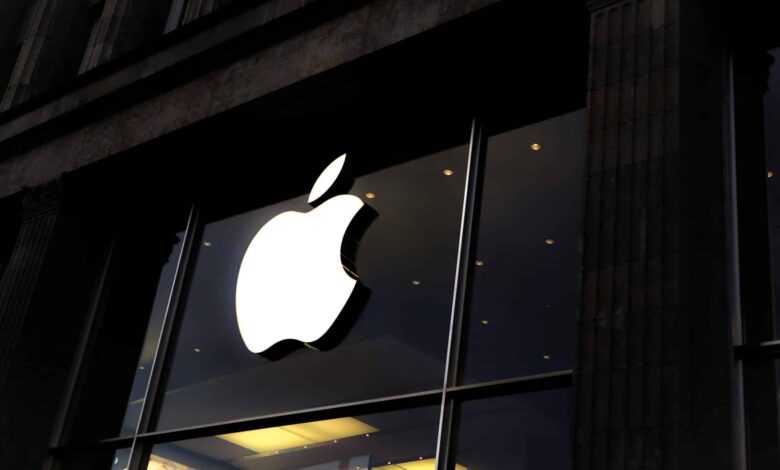Apple Reveals First-Quarter Revenue Details & Announces a $110 Billion Stock Buyback

- Apple released its Q1 revenue report. Except for Macs and services revenue, all other Apple offerings seem to have performed worse than last year.
- On the brighter side, Apple’s overall revenue managed to exceed estimates.
- The biggest reason behind the falling numbers is a dip in demand in China, its third-largest market.
- In light of existing challenges, the company also approved a $110 billion stock buyback.

On Thursday (May 2), Apple posted the revenue of its first quarter and announced a whopping $110 billion stock buyback—the largest in the company’s history.
In addition to that, the company also agreed to pay a dividend of 25 cents per share. Soon after the news was announced, Apple shares jumped 7%.
💡Also interesting: Google too announced a stock buyback worth $70 billion last week, as well as a first-ever dividend of 20 cents per share. In my coverage of the above-mentioned Google stock repurchase news, I explained what stock buybacks are and how they affect a company’s stock prices.
Apple’s Q1 Revenue Breakdown
Apple’s revenue stood at $90.8 billion. Although it’s down by 4% compared to last year, the number did exceed estimates.
Speaking of iPhones first, the company’s best-selling product, sales were down 10%, amounting to only $45.96 billion in the quarter that ended in March. This drop also suggests that there’s a weak demand for the iPhone 15 series, which came out last September.
Addressing this drop, Nabila Popal, research director at IDC said, “It’s a steep drop for Apple, but if you think of where we have been in the past four years, Apple has probably been the most resilient brand, overcoming supply chain issues and macro challenges, more than other brands.”
iPad revenue is also down by 17% year-over-year, amounting to $5.6 billion. MacBook sales, on the other hand, increased by 4%, totaling a revenue of $7.5 billion. The sales were apparently driven by the new MacBook Air models released in March that came with the upgraded M3 chips.
Services revenue stood at $23.9 billion, which, too, exceeded the estimates by analysts. Products such as wearables and home accessories including Apple Watch, AirPods, and Vision Pro (the newly launched mixed-reality headset) together brought in $7.91 billion, whereas the estimate was $8.08 billion—another negative number for the company.
Apple’s total income this quarter, taking all products and services into account is $23.6 billion, which is slightly less than the first quarter of 2023.
Speaking about its revenue, Apple said that the reason why the numbers seem so low compared to last year is because in 2023 it received $5 billion in delayed revenue from iPhone 14 sales during the pandemic period.
“If you remove that $5 billion from last year’s results, we would have grown this quarter on a year-over-year basis. And so that’s how we look at it internally from how the company is performing.” – Tim Cook
Here’s a quick summary of Apple’s Q1 performance:
| Product/Parameter | Actual Revenue (in billion dollars) | Estimated Revenue (in billion dollars) |
| iPhone | 45.96 | 46 |
| Mac | 7.5 | 6.86 |
| iPad | 5.6 | 5.91 |
| Services | 23.9 | 23.27 |
| Other products | 7.9 | 8.08 |
| Total Revenue | 90.8 | 90.1 |
| Gross Margin | 46.6 | 46.6 |
| EPS | $1.53 (not in billion) | $1.50 (not in billion) |
Reason for the Falling Demand of Apple Products
The biggest reason behind such relatively unsatisfactory numbers is Apple’s falling demand in China, which used to be one of its biggest markets. iPhone sales, for example, dropped by 19% in China.
However, the company says that iPhone sales are up in the region—and it’s not wrong, but there’s a caveat. The expected revenue was $15.59 billion in China, whereas it managed to rake in $16.37.
Although the fact that it managed to exceed expectations is a positive, the caveat is that it’s down by 8.1% compared to last year.
“I feel good about China. I think more about long term than to the next week or so.” – Tim Cook
For the long run, though, there are two major things to consider here for Apple:
- Since September 2023, people in government offices in China are banned from using iPhones.
- Smartphone sales of Chinese companies like Huawei and Xiaomi are significantly up, which means that at least some percentage of the population that were previously buying from Apple have now switched to its competitors.
Competition from Samsung is another reason behind Apple’s poor performance. Just a little less than a month ago, Samsung overtook Apple as the #1 smartphone maker in the world.
What’s Next for Apple?
Although times are a little tough for Apple right now, there seems to be hope in the future. For starters, CEO Tim Cook said that they set revenue records this quarter in a bunch of markets, including the Middle East, Spain, Canada, and Turkey.
Also, Apple is hosting an event in a few days, where it will almost certainly introduce a new lineup of iPads and accessories. So, the company expecting its iPad revenue to grow by double digits for the June quarter.
Overall sales are also expected to grow, although in a “small single digit.” Apple’s services division is also expected to grow at the same high rate that it has been growing at for the last couple of years.
Along with that, Apple is planning to integrate generative AI in its upcoming product lineups in the hope that it will boost its sales and therefore revenue.
Most notably, the company is working with OpenAI to power an iPhone chatbot. Also, MacBooks are set to get a massive update with the new AI-focused M4 chips.
More details about Apple’s AI plans will be unveiled at its annual Worldwide Developers Conference in June.
This isn’t the first time the company has faced hardships. For instance, its stock prices fell by 8% in 2024, reaching a value of less than $170 after hitting $200 at different times last year.
Still, Apple managed to reach a market cap of $2.6 trillion. Apple is and has always been resilient and there’s no doubt that it will bounce back—how it will do that will be exciting to watch.
 Our Editorial Process
Our Editorial Process
The Tech Report editorial policy is centered on providing helpful, accurate content that offers real value to our readers. We only work with experienced writers who have specific knowledge in the topics they cover, including latest developments in technology, online privacy, cryptocurrencies, software, and more. Our editorial policy ensures that each topic is researched and curated by our in-house editors. We maintain rigorous journalistic standards, and every article is 100% written by real authors.



